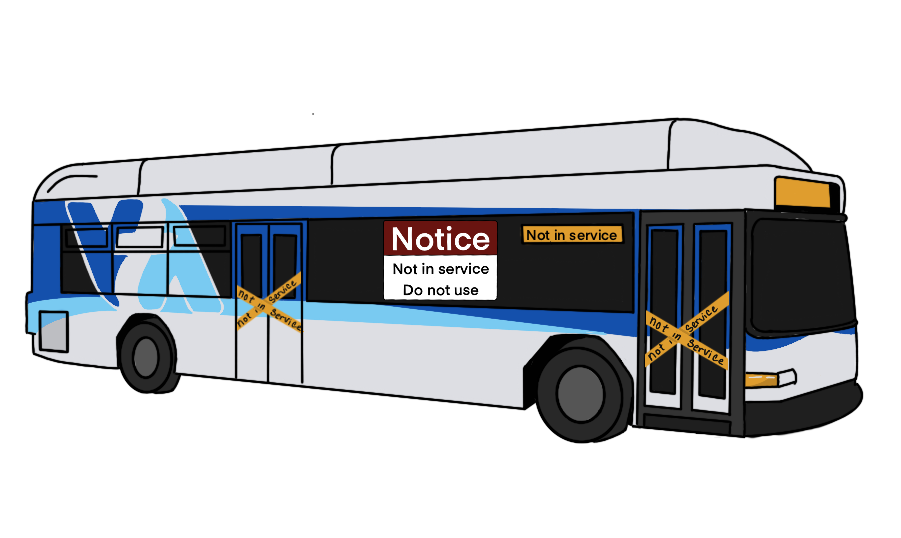On March 10, 2025, thousands of Santa Clara Valley Transportation Authority (VTA) workers went on strike. The strike has caused a halt in VTA bus and light rail services, making a major impact on over 100,000 commuters across Santa Clara County, according to Kion News Channel. The workers, who are represented by the Amalgamated Transit Union (ATU) Local 265, are on strike to negotiate for increased pay and safer working environments.
The main catalyst for the strike was the disagreement between VTA and ATU Local 265 on how much workers should be paid, which was negotiated from Aug. 2024 to Feb. 28, 2025. The VTA originally proposed a 9% wage increase over three years, arguing that their operators were one of the highest paid in the Bay Area. Yet, the ATU did not accept this contract, as they believed the wage offer would decrease over time due to budget constraints, inflation adjustment and employer bargaining. They also argued that the cost of living in the Bay Area is higher than other areas, making it essential for a wage increase. Furthermore, many workers believe that their working conditions play a big role in why they chose to go on strike. After the 2021 mass shooting that killed VTA employees, many feel concerned about workplace safety, according to The Almanac News.
However, due to this strike, many commuters, including FHS students and their families, have been negatively affected. With around 500 FHS students using the VTA daily, the strike has caused disruption in students’ and their families’ daily lives, adding a layer of stress and uncertainty. FHS freshman Liva Joncche spoke about the stress she felt when first hearing about the strike.
“I was stressed because I didn’t know how I was going to get to school,” Joncche said. “I live too far away to walk here, so I didn’t really have any other options.”
The VTA has been a source of convenience to many students as it allows those who live farther from school or do not have an alternate source of transportation to travel to and from school efficiently. With bus and light rail services gone due to strike, students have had to hastily search for new ways to get to school. Many students have had to adjust their schedules, such as waking up early or staying late after school. FHS freshman Isabella Bjork explained how the strike resulted in her having to arrive at school earlier and leave later; it has also disrupted her extracurricular activities and academic life.
“My mom had to take me to school, and I was getting to school at 7:30 a.m., and I was waiting at school, sometimes in the rain, just to get home, until 4:35 p.m.,” Bjork said. “It disrupts the time I have to do homework and I’m on [the] track [team] too, so a lot of the days I can’t even go [to practice].”
The court date regarding the VTA strike was originally set for March 17, 2025, and was later postponed to March 26, 2025 for a more thorough review of the case. This delay has prolonged the strike, and along with it, the disrupted schedule. The aftermath of the court hearing resulted in Santa Clara County Judge Daniel Nishigaya issuing an injunction that forced VTA workers to go back to work since they had breached the ‘no strike’ clause in their contract.
Since the strike, FHS has spent $6,000 per day on charter buses from United Charters for students who previously relied on VTA. However, due to the cost of the buses and the sudden switch to a new transportation company, charter buses are an unreliable solution. FUHSD Director of Administrative Services Jason Crutchfield highlighted how the charter buses are not effective for long-term use.
“We’re finding that a charter bus, single load, one door, all the kids have to walk in one at a time and go up the stairs is not a super fast, efficient way,” Crutchfield said.
Ultimately, transportation is crucial for a student’s school life, despite often being taken for granted. Without reliable transportation, many students who rely on public transit face significant disruptions to their daily lives. The strike has shed light on how essential these services are and how VTA workers’ concerns should be addressed sooner rather than later.









